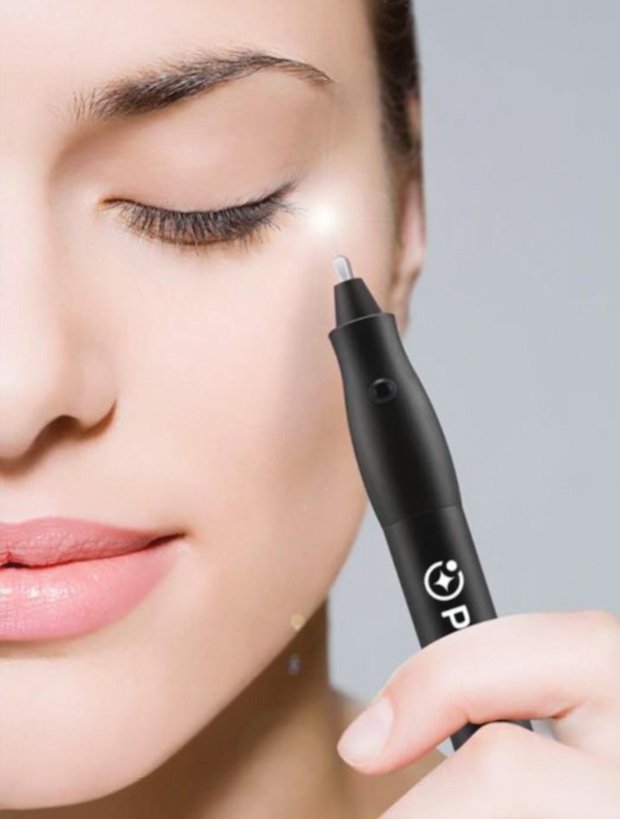
Plasma pen
Plasma Pen Treatment: Non-Surgical Skin Tightening
Our Plasma Pen treatment is a revolutionary, non-invasive procedure that stimulates natural collagen production for firmer, more youthful skin. The Plasma Pen uses controlled pulses of plasma energy to create tiny micro-traumas on the skin’s surface, encouraging the skin’s healing response and boosting collagen and elastin production. This process tightens and smooths the skin, reducing fine lines, wrinkles, and sagging without the need for surgery or injectables.
Ideal for areas such as the eyes, forehead, and neck, Plasma Pen treatments offer long-lasting results with minimal downtime, leaving you with a refreshed and rejuvenated appearance.

After a Plasma Pen treatment, your skin begins a natural healing process, which is essential for achieving optimal results. The production of collagen and elastin starts to increase, leading to noticeable improvements over the following weeks. While you see some initial changes within a few days, the full effects of the treatment—characterised by firmer and smoother skin—become more evident around the 12-week mark, as your skin continues to regenerate and tighten. This gradual transformation not only ensures that the results are long-lasting but also maintains a natural appearance.
Following post-treatment care guidelines is crucial to support the healing process effectively. To enhance your results, prioritize hydration, limit excessive sun exposure, and adopt a gentle skincare routine. It's essential to exercise patience throughout this journey; each day brings you closer to the rejuvenated skin you seek. Embrace this transformative experience as your natural beauty unfolds, revealing a more radiant you.

Contraindications of Plasma Pen
Plasma pen treatments, while effective for skin tightening and rejuvenation, are not suitable for everyone. The following contraindications must be considered before undergoing the procedure:
Skin Conditions: Individuals with active skin conditions such as eczema, psoriasis, or dermatitis should avoid plasma pen treatments as these conditions can exacerbate irritation and impede healing.
Pregnancy and Breastfeeding: It is generally advised that pregnant or nursing women postpone plasma pen treatments until after childbirth and weaning.
Autoimmune Disorders: Those with autoimmune conditions, such as lupus or scleroderma, may experience adverse reactions, as their immune responses are compromised.
Diabetes: Patients with uncontrolled diabetes are at a higher risk of complications, including delayed healing and infections.
Recent Surgical Procedures: Individuals who have undergone surgery in the treatment area within the last six months should wait until full recovery before considering plasma pen treatment.
Blood Clotting Disorders: Those with bleeding or clotting disorders may experience excessive bleeding or complications during the healing process.
Skin Type Considerations: Higher Fitzpatrick skin types (IV, V, and VI) may need to exercise additional caution. These skin types are more prone to hyperpigmentation and scarring after treatments. It is critical to assess the skin's condition and consider a patch test prior to full treatment to minimise risks.
Use of Certain Medications: Patients taking anticoagulants, steroids, or other medications that affect blood clotting and skin healing should consult with their healthcare provider.
Recent Chemical Peels or Laser Treatments: Individuals who have had chemical peels or laser treatments in the target area should wait at least 4-6 weeks post-treatment to prevent overlapping effects.
Active Infections: Treatments should not proceed if there is an active infection in the treatment area, including viral infections like herpes simplex.
Consultation with a qualified practitioner is essential to evaluate individual health status and skin type before proceeding with plasma pen treatment.





